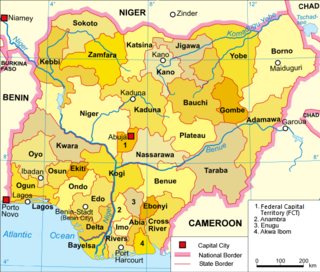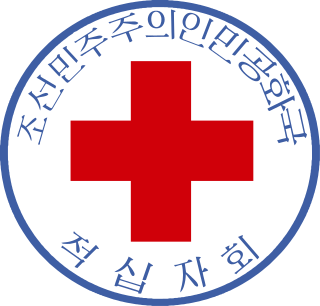
Typhoon Rusa was the most powerful typhoon to strike South Korea in 43 years. It was the 21st JTWC tropical depression, the 15th named storm, and the 10th typhoon of the 2002 Pacific typhoon season. It developed on August 22 from the monsoon trough in the northwestern Pacific Ocean, well to the southeast of Japan. For several days, Rusa moved to the northwest, eventually intensifying into a powerful typhoon. On August 26, the storm moved across the Amami Islands of Japan, where Rusa left 20,000 people without power and caused two fatalities. Across Japan, the typhoon dropped torrential rainfall peaking at 902 mm (35.5 in) in Tokushima Prefecture.

Hurricane Lili was a relatively long-lived hurricane of the 1996 Atlantic hurricane season that affected countries from Central America to the United Kingdom. Lili formed on October 14 from a tropical wave, which emerged from the coast of west Africa on October 4. After the storm formed, further strengthening of Lili was gradual, first to tropical storm status on October 16 and then to hurricane status on October 17. The next day, Lili struck Cuba and moved across the central portion of the island, the first hurricane to hit the country since Hurricane Kate in 1985. After emerging into the Atlantic Ocean, the hurricane accelerated northeastward, briefly peaking as a category 3 hurricane on the Saffir-Simpson Hurricane Scale near the Bahamas. For almost an entire week, Hurricane Lili oscillated in intensity while fluctuating several times in forward speed. About two weeks passed before Lili transitioned into an extratropical storm north of the Azores on October 27, which subsequently moved across Ireland and Great Britain.

Flooding in North Korea in July 2006 caused extensive damage and loss of life, although reports differ about its extent.

Typhoon Wipha, known in the Philippines as Super Typhoon Goring, was the strongest typhoon to threaten the Chinese coastline since Typhoon Saomai in August 2006. Forming out of a tropical disturbance on September 15, 2007, it quickly developed into a tropical storm, and intensified into a typhoon the following day with the appearance of an eye feature. After a period of rapid intensification, Wipha attained its peak intensity on September 18, with winds of 185 km/h (115 mph) and a barometric pressure of 925 mbar (hPa), according to the Japan Meteorological Agency. Later that day, the storm began to weaken as it interacted with the mountainous terrain of Taiwan before brushing the northern edge of the island. Wipha subsequently made landfall near Fuding along the Fujian–Zhejiang provincial border with winds estimated at 185 km/h (115 mph) by the JTWC. Shortly thereafter, the typhoon weakened as it moved inland, weakening to a tropical storm within 18 hours of moving over land.
The 2010 Nigerien floods were floods across Niger which left over 111,000 people homeless. Niger was already suffering acute food shortages following prolonged drought in the Sahel region. As of 24 August 2010, at least 6 to 8 people had died. The Niger river was pushed to its highest levels in 80 years. The floods subsequently spread along the River Niger into Nigeria, Ghana, Burkina Faso, Togo and Benin over the next few months. Later storms also brewed up in the CAR, Morocco and northern Algeria.
A series of floods in Colombia began in late April 2011, coinciding with the country's rainy season. Torrential rains triggered extensive flooding and landslides that killed at least 111 people and left more than 69,000 homeless. Estimates have placed damage at US$5 billion. After September, a second wave of flooding and landslides killed another 81 people, wounded 65 more and affected approximately 289,000.

Typhoon Judy of July 1989 was a strong tropical cyclone that caused extensive damage and loss of life in Japan, South Korea and the eastern Soviet Union. Originating from a monsoon trough on July 21, Judy began as a tropical depression west of the Northern Mariana Islands. Tracking west-northwest, the system gradually intensified into a tropical storm and was given the name Judy on July 23. By this time, the storm had turned due north. Two days later, Judy attained typhoon status as it began a gradual turn to the west-northwest. Late on July 25, the storm peaked with winds of 165 km/h (105 mph). Striking Kyushu on July 27, interaction with the island's mountainous terrain caused Judy to quickly weaken as it neared South Korea. The weakened storm struck the country west of Pusan the following day before losing its identity near the border with North Korea. The remnants of Judy were last noted over the Sea of Japan.

The 2012 North Korean floods began in mid-July 2012 when Tropical Storm Khanun affected parts of the country, killing at least 88 people and leaving more than 62,000 people homeless. Torrential rains on 29 and 30 July 2012 worsened the situation, causing additional damage and casualties and forcing the government to request international assistance. Severe rainfall also affected the southern region of North Korea in August, killing at least six.

The 2012 Nigeria floods began in early July 2012. It killed 363 people and displaced over 2.1 million people as of 5 November 2012. According to the National Emergency Management Agency (NEMA), 30 of Nigeria's 36 states were affected by the floods and the two most affected areas were Kogi and Benue States. The floods were termed as the worst in 40 years, and affected an estimated total of seven million people. The estimated damages and losses caused by the floods was N2.6 trillion.

Typhoon Olga, also known in the Philippines as Typhoon Ising, was a destructive and deadly typhoon that hit Korean Peninsula in 1999. Olga killed 106 people in Korea and caused $657 million in damages.

The Red Cross Society of the Democratic People's Republic of Korea is the national Red Cross Society of North Korea. It was founded as the Red Cross Society of North Korea on 18 October 1946 by the Soviet-backed occupational government.
The following lists events that happened during 2012 in Nigeria.

Typhoon Lionrock, known in the Philippines as Typhoon Dindo, was a large, powerful, long-lived and erratic tropical cyclone which caused significant flooding and casualties in North Korea and Japan in late August 2016. It was the tenth named storm and was the third typhoon of the 2016 Pacific typhoon season. Damages recorded after the season were recorded about US$3.93 billion.

The 2016 North Korean floods began in late-August 2016 as a consequence of Typhoon Lionrock, killing at least 525 people, destroying more than 35,000 homes, and leaving over 100,000 people homeless, mainly in the North Hamgyong Province. The floods occurred when the Tumen River, near the borders with China and Russia, broke its banks, according to the United Nations Office for the Coordination of Humanitarian Affairs and Red Cross.
The 2020 East Africa floods were a natural disaster in Rwanda, Kenya, Somalia, Burundi, Ethiopia, Uganda, Democratic Republic of Congo, Djibouti and Tanzania, affecting at least 700,000 people. They began when excessive rains began falling in March, leading to massive flooding and landslides. They caused more than 430 deaths, notably in Kenya and Rwanda. In the fall another round of floods hit the African Sahel.

Hispaniola is an island in the Caribbean, with the second largest size throughout all of the Caribbean. Throughout the centuries, since reliable records began, hundreds of hurricanes and tropical cyclones have affected Haiti and the Dominican Republic, the two countries that share the island. The most recent tropical cyclone to affect Hispaniola was Hurricane Franklin in August 2023.

The Korean Peninsula is a peninsula region located over Eastern Asia. The region is divided into North Korea and South Korea.
Korea has historically suffered several floods due to heavy rains, typhoons, and heavy snowfalls. Most of the flood damage was caused by storms and tsunamis caused by typhoons, and floods.












